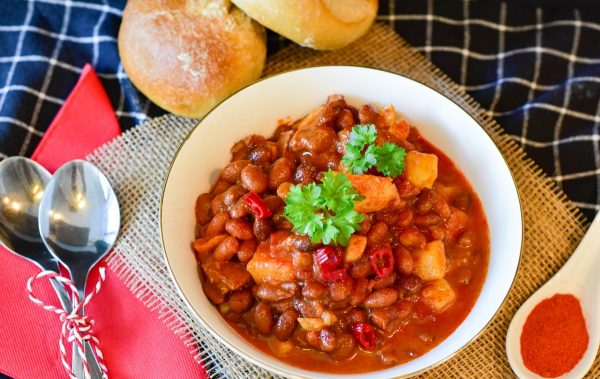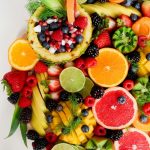Back in 1988 a strange thing happened.
A hospital launched a “Healthy Eating Day.”
But shortly after enjoying the healthy lunch offered by the hospital, one of the surgical record-keepers fell ill. And before the end of the day, 10 more people who ate in the cafeteria experienced nausea, vomiting and diarrhea.
What was happening? How could a perfectly healthy meal make people sick?
Well, it wasn’t E. coli or salmonella that caused these horrible symptoms. Instead, it is believed that undercooked kidney beans served in one of the lunchtime dishes were the culprit.
The Problem with Lectin
These beans contain an abnormally high concentration of a lectin known as phytohaemagglutinin. Just four or five raw or undercooked kidney beans with high levels of it can produce symptoms similar to food poisoning.
And while the phytohaemagglutinin in raw kidney beans can produce an extreme reaction, there are many other types of lectins found naturally in our food supply that may produce other negative effects.
For example, the lectins in nightshade vegetables are believed to aggravate arthritis symptoms. Others are suspected of contributing to inflammation and leaky gut syndrome. However, in the majority of people lectins don’t appear to cause any problems at all.
But why are lectins found naturally in plants in the first place? Well, they play a critical role in the plant’s resistance against microbes, insects and other pests. (Wouldn’t it be really scary if plants could just pull up their roots and change location to get away from those threats? Yikes!)
The fact is many foods that contain lectins, such as squash, soy, pumpkin, grains, zucchini, legumes (beans, peas, lentils, and nuts) and the nightshades (tomatoes, potatoes, eggplant and peppers) are known to reduce the risk of chronic disease and extend life.
So one thing is very clear to me.
Going lectin free isn’t the answer. All that will do is deprive you of much needed nutrition that comes from eating a wide variety of antioxidant rich plant-based foods.
Instead, I find it’s much healthier to focus on ways to remove the lectins from these otherwise healthy foods so you can enjoy them without worry.
5 Ways to Get this Rogue Anti-Nutrient Out of Your Diet
Many high-lectin foods are proven to support heart health, lower inflammation levels, prevent glucose and insulin spikes, protect against cancer… and so much more.
With this in mind, I always urge my patients to buy, prepare and cook their foods in the healthiest way possible. And lectin-containing foods that are filled with phytonutrients, antioxidants and other health-giving properties are at the top of my list.
So here are a few tips you can use to slash your intake of this potentially rogue anti-nutrient while still enjoying a wide variety of life-supporting foods:
Learn to cook your beans properly. Beans are great for your health. They’re high in protein and jam-packed with fiber and nutrients like potassium, magnesium, folate, iron and zinc.
However, if you forget to soak your beans ahead of time – or if you cook them in a slow cooker – you won’t be able to destroy the lectins in them. (A slow cooker doesn’t get hot enough to break lectins down.)
But if you cook your dried beans properly, you can reduce the lectin content by about 200%.
All you have to do is soak them overnight (about 12 hours) in a pot of water. Drain the water and rinse the beans, then add fresh water to cover them. Place them on the stove and boil them for a full 10 minutes. Then lower the heat and simmer until tender.
A pressure cooker or Instapot works just as well as the boil/simmer method. (After soaking and draining, just follow the instructions in the cooking manual.)
Peel and de-seed your veggies. In foods like tomatoes, squash, zucchini and pumpkin, the lectins are found in the skins and seeds. So peeling and de-seeding are called for.
While this is easy enough with some vegetables, skinning and de-seeding tomatoes takes a little more work. But it’s not difficult.
Just use a paring knife to slash an X on the bottom center of the tomatoes. Then place them in a pot of boiling water for about one minute… until the skins start looking wrinkled.
Remove them from the water and let them cool down before peeling. After that, all you need to do is cut them in wedges and use a small spoon to scoop the seeds out of each wedge. (Health tip: Cooked tomatoes have a higher content of cancer-fighting lycopene than uncooked tomatoes!)
Fermentation is always a good thing. Fermenting foods is another way to reduce lectin levels. This is especially true when it comes to soy products that are considered high-lectin foods.
Natto, tempeh and miso are all great choices. And don’t forget… you can ferment other veggies, too. Not only does fermenting reduce lectins, it also boosts probiotic activity that supports a healthy gut.
Just say “no” to wheat. I consistently recommend staying away from wheat products due to their high gluten content. However, wheat also contains lectins. So it can potentially cause health problems even if you’re not gluten intolerant.
Watch out for the nut that’s not a nut. Believe it or not, peanuts are not nuts. They’re legumes. And they are high in lectins. Even worse, peanuts contain aflatoxin, a natural toxin produced by certain strains of mold. I find that tree nuts like walnuts, pecans and Brazil nuts are a much better choice.
Just pick a variety of plant-based foods to blend into your diet. When prepared correctly, even lectin foods have multiple healthy life benefits.
SOURCES:
Freed DLJ. Do dietary lectins cause disease? The evidence is suggestive—and raises interesting possibilities for treatment. BMJ. 1999 Apr 17; 318(7190): 1023–1024.
Dolan LC, et al. Naturally Occurring Food Toxins. Toxins (Basel). 2010 Sep; 2(9): 2289–2332.




